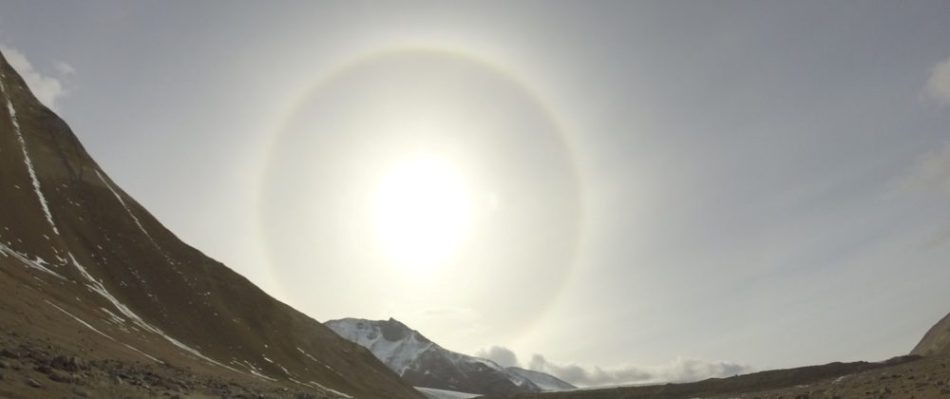Jan 8 2018
In a study covering twenty years, a team of researchers led by Colorado State University observed dwindling numbers of nematodes, soil fauna and other animal species in the McMurdo Dry Valleys; one of the world’s coldest and driest deserts. This finding is attributed to climate change, which has caused melting and thawing of ice in this desert after an unusually warm weather event in 2001.
 There are no plants, birds or mammals in the McMurdo Dry Valleys, which are located in the largest region of the Antarctic continent. (Photo credit: Ashley Shaw)
There are no plants, birds or mammals in the McMurdo Dry Valleys, which are located in the largest region of the Antarctic continent. (Photo credit: Ashley Shaw)
In the McMurdo Dry Valleys, located in the largest region of the Antarctic continent, there are no birds, plants, or mammals. However, microbes and microscopic soil invertebrates live in the tough ecosystem, where the mean average temperature is below -15 °C or 5 °F.
The findings offer an understanding and an alarm bell on how ecosystems react to climate change and to uncommon climate events, scientists said.
“Until 2001, the region was not experiencing a warming trend,” said Walter Andriuzzi, lead author of the study and a postdoctoral researcher in the Department of Biology and School of Global Environmental Sustainability.
“On the contrary, it was getting colder,” he continued. “But in 2001, the cooling trend stopped abruptly with an extremely warm weather event. Since then, the average temperatures are either stable or are increasing slightly. But most importantly, there have been more frequent intense weather events.”
The research team sampled soil invertebrates and measured soil properties, including water content, at three different elevations and in three hydrological basins in the region. In Taylor Valley, the field study was initiated in 1993; in Miers and Garwood valleys, the research team started their work in 2011.
Andriuzzi said what the team discovered in this long-term study cannot be detected by looking at monthly or average temperatures.
“It’s a few hours, or days of unusually warm weather,” he said. “There are even peaks of high solar radiation that trigger ice thawing without high temperatures. That’s how climate change is happening there, and it’s already starting to impact the biological community there.”
Higher temperatures result in increased melting and thawing of ice from permafrost and glaciers, which has caused the decline of the most common species - the nematode Scottnema lindsayae. Other species are becoming more plentiful and are spreading uphill. Consequently, at higher elevations, the animals and microbes in the soil are becoming more diverse, with unfamiliar consequences for the ecosystem.
“This is happening worldwide, and not just in Antarctica,” said Andriuzzi, who is a researcher in the lab of University Distinguished Professor Diana Wall. In the Rocky Mountains, for example, researchers have witnessed insects moving uphill on a year to year basis, because of warming temperatures.
Andriuzzi, who guided the field work in the McMurdo Dry Valleys, called Antarctic nematodes “remarkable creatures.”
“It’s amazing that they survive in these conditions,” he said. The growing season just lasts a few weeks, but in the field, this microscopic animal may possibly live 10 years.
Based on what the team found, Andriuzzi said it will take time for the nematode community to recuperate from these disturbances.
“With climate change, some species are winners, some are losers,” he said. “In the Dry Valleys it’s all about how they respond to warming and, most importantly, water.”
Andriuzzi said shifts in communities are mostly very hard to predict as there are so many species.
“It’s easier in places like the dry valleys to isolate the effects of climate change, or to isolate how one species responds to climate change in one way,” he said. “It’s a natural laboratory, where some of the mechanisms that operate elsewhere can be unveiled.”
This study is part of the McMurdo Dry Valleys Long-Term Ecological Research program, which was set up in Antarctica by the National Science Foundation in 1992. CSU’s Diana Wall is one of the founders of this field study.